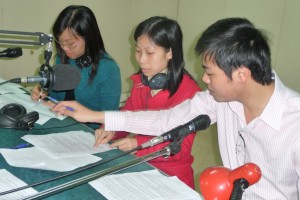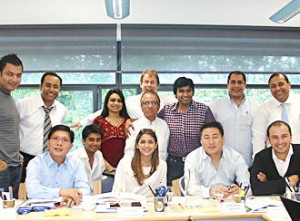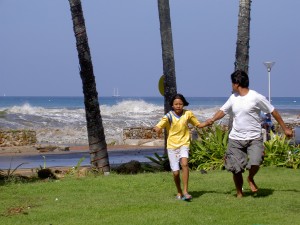Producing “Radio for the People” in Vietnam
 Radio listeners in Northern Vietnam’s Quang Ninh Province probably didn’t know what hit them earlier this year. Instead of drab propaganda programs, the radio was playing popular music interspersed with traffic information and listeners’ calls. And this new show was presented by a friendly host who was talking to the listeners at eye level. So far, radio hosts had sounded more like talking machines who thought it necessary to instruct the audience what to think.
Radio listeners in Northern Vietnam’s Quang Ninh Province probably didn’t know what hit them earlier this year. Instead of drab propaganda programs, the radio was playing popular music interspersed with traffic information and listeners’ calls. And this new show was presented by a friendly host who was talking to the listeners at eye level. So far, radio hosts had sounded more like talking machines who thought it necessary to instruct the audience what to think.
The program the listeners of QTV radio in Quang Ninh Province were hearing was “Rush Hour”, a one-hour morning show that the station had just started with the help of DW-AKADEMIE, Friedrich-Ebert Foundation and Vietnam’s Academy of Journalism and Communication.
![]() read more
read more
Asian media execs brush up their leadership skills in Bonn
 “Change management” was the catchphrase for 13 media managers from eight North African and Asian countries who attended a management training workshop in Bonn this summer. The participants discussed ways to organize transition at their respective stations. By using techniques like role play, they practiced communicating their decisions in a professional way. The training also highlighted cooperation and conflict in teams, group dynamics and key aspects of human resource development.
“Change management” was the catchphrase for 13 media managers from eight North African and Asian countries who attended a management training workshop in Bonn this summer. The participants discussed ways to organize transition at their respective stations. By using techniques like role play, they practiced communicating their decisions in a professional way. The training also highlighted cooperation and conflict in teams, group dynamics and key aspects of human resource development.
The Asian participants came from Bangladesh, Pakistan, Philippines and Mongolia. Besides visiting DW’s facilities and attending the Deutsche Welle Global Media conference ahead of the workshop, their action-packed schedule included a visit to German public broadcaster WDR in Cologne. A lively exchange with that station’s director of human resources topped off the week.
In this video, project manager Patrick Benning takes us inside the week-long workshop that was taught by DW-AKADEMIE trainer Achim Toennes. Participants Sarmad Palijo of Pakistan and Mat Verano Pareja of the Philippines describe their impressions of the visit to Germany.
Creating Asian guidelines for user-generated content
The Asian tsunami of 2004 and the Japanese earthquake and tsunami this year were two occasions where broadcasters around the globe relied heavily on user-generated content (UGC). They aired videos people had taken with their mobile phones, pictures snapped with digital pocket cameras or they simply broadcast information users had sent in via e-mail or as text messages from remote places.
These days, many radio and TV stations encourage their audiences to contribute material to their broadcasts. This gives them access to footage professional crews couldn’t otherwise get – or couldn’t get that quickly. And it gives the audience a voice, creating a two-way conversation with the broadcasters and making people feel like the broadcaster is there for them, picking up their stories and addressing their concerns.
Making the most of user-generated content
But how can broadcasters safeguard the quality and suitability of such content? After all, it’s supplied by regular listeners or viewers: amateurs, not trained journalists. Citizen reporters haven’t necessarily been taught the journalistic basics every professional has learned, like how to research facts, how to report accurately and how to be fair to all sides.
![]() read more
read more
Using an “axis of importance” diagram to evaluate sources
 Out of one workshop at NUOL came a good tool that fits perfectly into that quest. It’s a diagram that helps journalists evaluate their sources (see photo at left, click to enlarge).
Out of one workshop at NUOL came a good tool that fits perfectly into that quest. It’s a diagram that helps journalists evaluate their sources (see photo at left, click to enlarge).![]() read more
read more
An inside look at Bhutan’s first TV program for kids
Thinley Yangchen Dorji, a producer at the Bhutan Broadcasting Service Corporation (BBS), takes us on a tour behind the scenes of Bhutan’s first homegrown TV show for kids. Called “My World”, it’s a 30-minute program for youngsters aged eight to twelve that began airing regularly in January. Welcome to “My World”!
Prior to “My World” there were no Bhutanese television programs for children. Foreign programming available via satellite was entertaining but had little educational value. Pema Choden, BBS’s General Director until the end of March 2011, approached DW-AKADEMIE for support. Her aim was to have a quality program tailored to children in Bhutan.
![]() read more
read more








